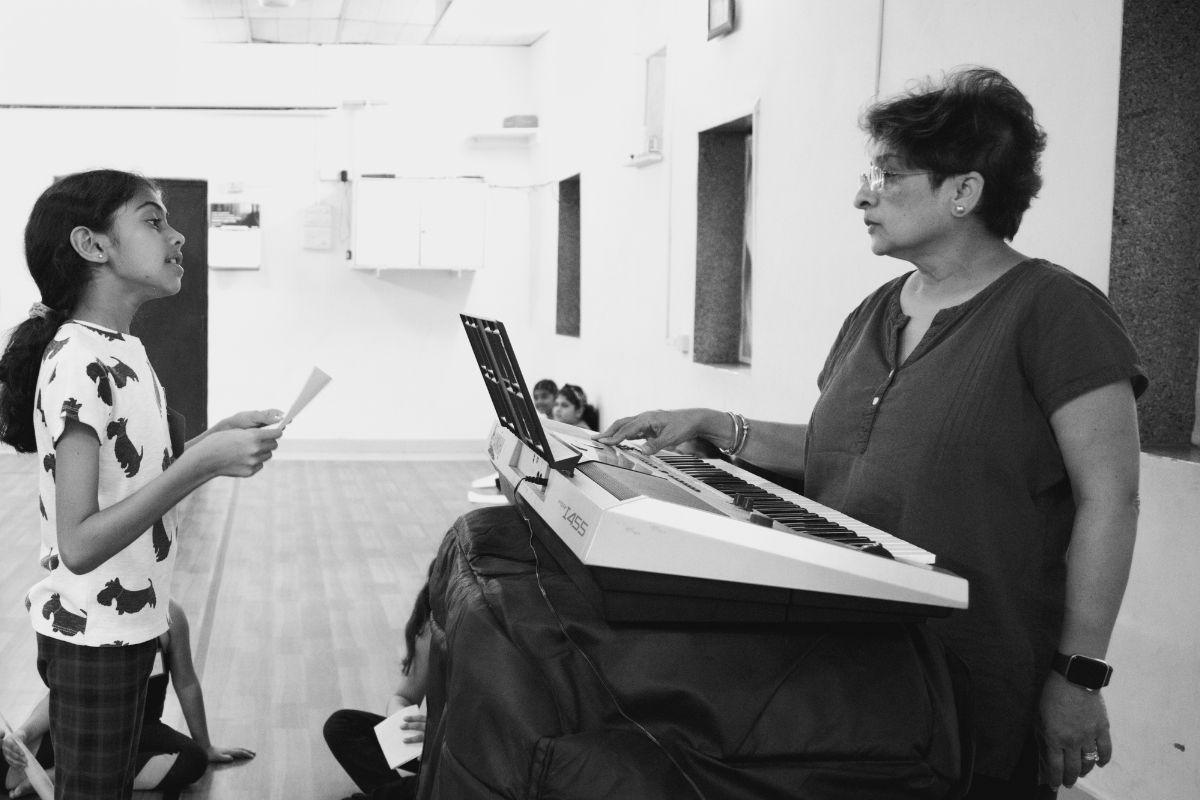Learning to Sing in the Operatic Style:
Repertoire Selection & Performance Practice

When one thinks of opera in India, Celia Lobo instantly comes to mind. As India’s Opera Diva, she shattered barriers in the 1960s, taking on iconic lead roles in Tosca (Puccini), Lucia di Lammermoor (Donizetti), La Traviata and Rigoletto (Verdi), and Norma (Bellini) with the Bombay Madrigal Singers Organisation (BMSO).
Opera is a demanding art form, requiring not just technical mastery but emotional depth and stylistic precision. A great performer does more than sing—they bring characters and stories to life through expressive phrasing, powerful projection, and deep emotional connection.
Essential Terms for Aspiring Singers
Before delving into the nuances of operatic singing, here are some key terms every aspiring singer should know:
Aria – A solo piece that showcases vocal skill and dramatic expression.
Libretto – The text or script of an opera.
Vibrato – A controlled, natural oscillation in pitch that adds warmth and expression.
Foundations of Operatic Singing
Posture & Breath Support
Proper posture is crucial for breath control and vocal projection. Stand tall, relaxed, and balanced, with your shoulders down and feet slightly apart.
Operatic singing relies on solid breath support. This happens when a set of four muscles: diaphragm, intercostals, back, and abdominals along with the breath and the larynx work together. The engagement of all these four muscles fully ensures stronger, sustained notes and a consistent tone.
Vocal Placement & Phonation
Developing resonance is essential for the operatic voice. Singers often direct their sound toward the mask area (forehead, nose, and cheeks) for maximum projection. Experimenting with different placements can help reduce vocal strain.
Additionally, proper phonation ensures clarity and efficiency in tone production. The vocal cords should close properly, avoiding breathiness while maintaining flexibility for expressive phrasing. Exercises such as scales, arpeggios, and phonation drills help refine technique.
Expanding Vocal Range
A well-developed range allows singers to navigate both soaring high notes and rich low tones with ease. Daily vocal warm-ups, including scales and arpeggios, gradually build flexibility and strength.
Mastering Languages for Opera
Since opera repertoire spans multiple languages, singers should develop proficiency in Italian, French, German, Spanish, Latin, and English. Understanding these languages enhances diction, phrasing, and interpretation, providing deeper insight into historical and cultural contexts.
The Role of a Voice Teacher and Opera Coach
Studying with a qualified voice teacher is crucial for mastering operatic technique. Additionally working with an opera coach is equally important when learning and perfecting the interpretation of the operatic repertoire. A voice teacher with performance experience—such as Deirdre Lobo, who will soon launch her curated opera course—helps singers refine their technique, prevent vocal strain, and build confidence for the stage.
Repertoire Selection & Performance Practice
Choosing the right repertoire is essential for vocal development. Beginners should start with lighter roles before attempting heavier, more dramatic parts.
For example, for Sopranos, Mozart’s Susanna (Le Nozze di Figaro) is an ideal starting point, whereas Puccini’s Tosca requires more vocal stamina. Don Ottavio (Don Giovanni) is a good entry role for Tenors, while Calaf (Turandot) demands greater power and endurance.
Understanding Voice Types:
The FACH System
The FACH system, developed in Germany, categorizes operatic voices based on range, timbre, and agility. This helps singers find roles that suit their vocal strengths and avoid strain.
Soprano Voices
Lyric Soprano – Light, agile (e.g., Susanna in Le Nozze di Figaro).
Dramatic Soprano – Powerful, rich (e.g., Turandot in Turandot).
Coloratura Soprano – High, flexible (e.g., Queen of the Night in Die Zauberflöte).
Mezzo-Soprano & Contralto Voices
Lyric Mezzo – Warm, expressive (e.g., Carmen in Carmen).
Dramatic Mezzo – Fuller, darker (e.g., Amneris in Aida).
Contralto – Deepest female voice (e.g., Erda in Das Rheingold).
Tenor Voices
Lyric Tenor – Bright, agile (e.g., Alfredo in La Traviata).
Dramatic Tenor – Strong, heroic (e.g., Otello in Otello).
Baritone & Bass Voices
Lyric Baritone – Warm, smooth (e.g., Figaro in Il Barbiere di Siviglia).
Dramatic Baritone – Rich, commanding (e.g., Rigoletto in Rigoletto).
Bass-Baritone – Deep yet flexible (e.g., Wotan in Die Walküre).
Bass – Darkest male voice (e.g., Sarastro in Die Zauberflöte).

Mastering opera is a lifelong journey that requires technical discipline, emotional artistry, and stylistic awareness. From developing vocal technique to choosing the right repertoire and understanding the nuances of composers, each element contributes to a singer’s growth.
By studying with a professional coach and embracing a structured approach, aspiring opera singers can build stamina, refine their craft, and bring iconic roles to life with authenticity and brilliance.
Ready to take your operatic journey to the next level? Stay tuned for Deirdre Lobo’s upcoming opera training course!

